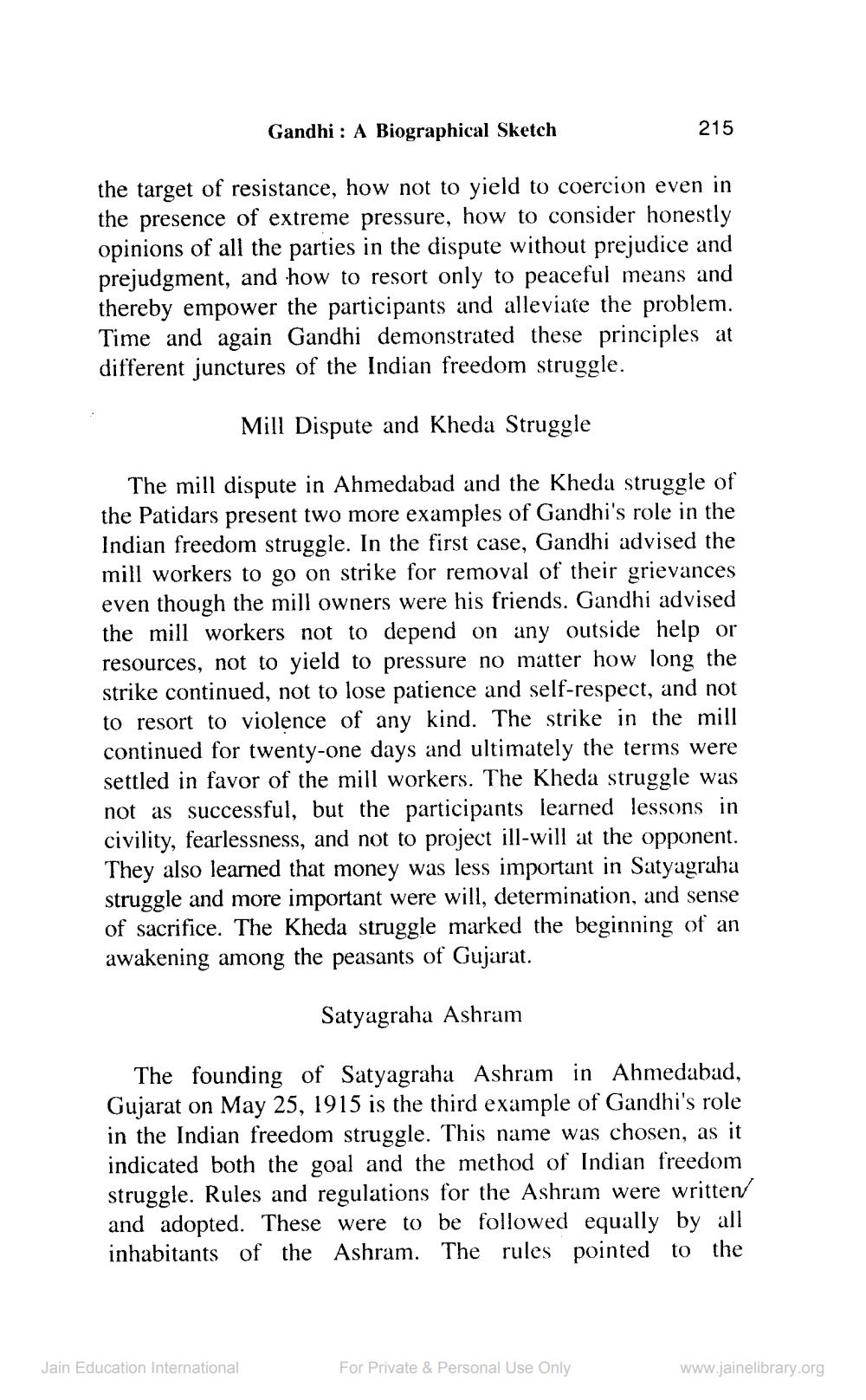________________
Gandhi : A Biographical Sketch
215
the target of resistance, how not to yield to coercion even in the presence of extreme pressure, how to consider honestly opinions of all the parties in the dispute without prejudice and prejudgment, and how to resort only to peaceful means and thereby empower the participants and alleviate the problem. Time and again Gandhi demonstrated these principles at different junctures of the Indian freedom struggle.
Mill Dispute and Kheda Struggle
The mill dispute in Ahmedabad and the Kheda struggle of the Patidars present two more examples of Gandhi's role in the Indian freedom struggle. In the first case. Gandhi advised the mill workers to go on strike for removal of their grievances even though the mill owners were his friends. Gandhi advised the mill workers not to depend on any outside help or resources, not to yield to pressure no matter how long the strike continued, not to lose patience and self-respect, and not to resort to violence of any kind. The strike in the mill continued for twenty-one days and ultimately the terms were settled in favor of the mill workers. The Kheda struggle was not as successful, but the participants learned lessons in civility, fearlessness, and not to project ill-will at the opponent. They also learned that money was less important in Satyagraha struggle and more important were will, determination, and sense of sacrifice. The Kheda struggle marked the beginning of an awakening among the peasants of Gujarat.
Satyagraha Ashram
The founding of Satyagraha Ashram in Ahmedabad, Gujarat on May 25, 1915 is the third example of Gandhi's role in the Indian freedom struggle. This name was chosen, as it indicated both the goal and the method of Indian freedom struggle. Rules and regulations for the Ashram were written/ and adopted. These were to be followed equally by all inhabitants of the Ashram. The rules pointed to the
Jain Education International
For Private & Personal Use Only
www.jainelibrary.org




